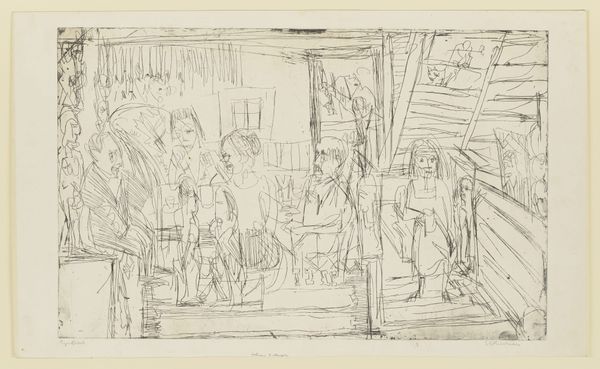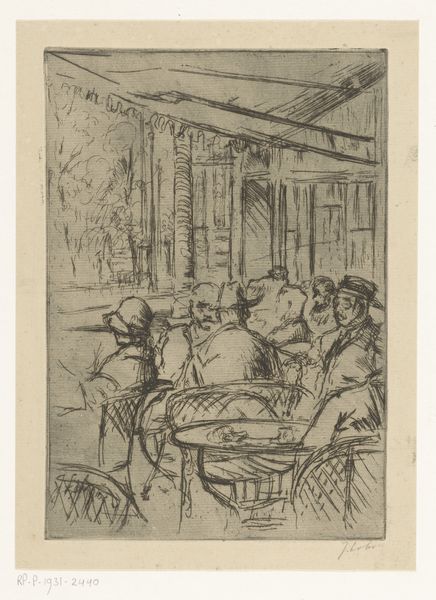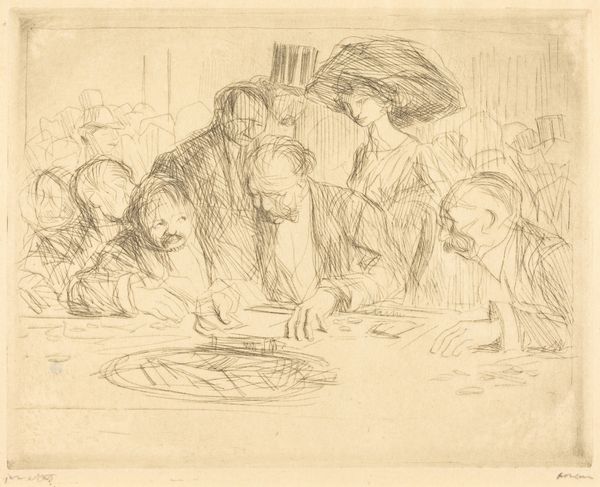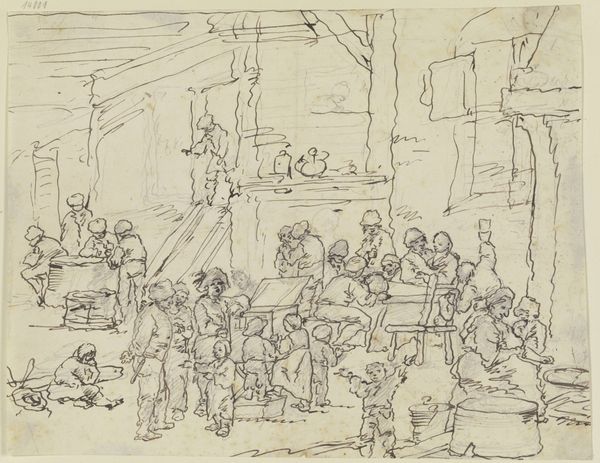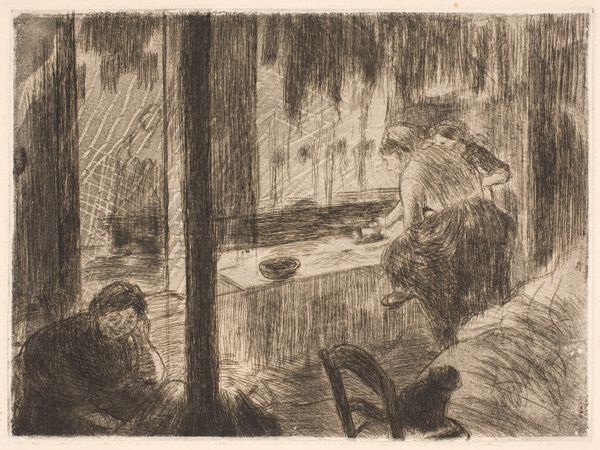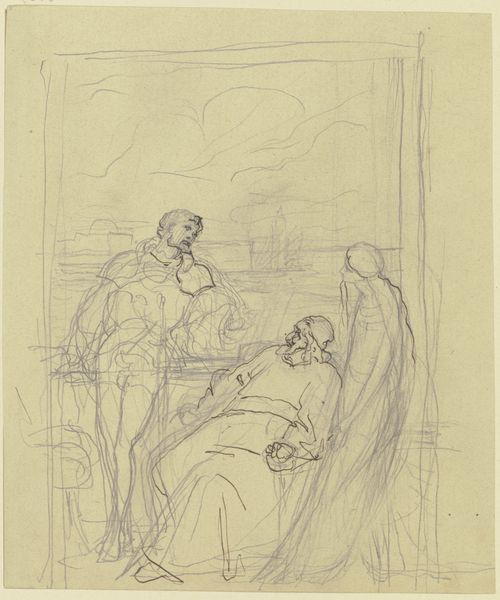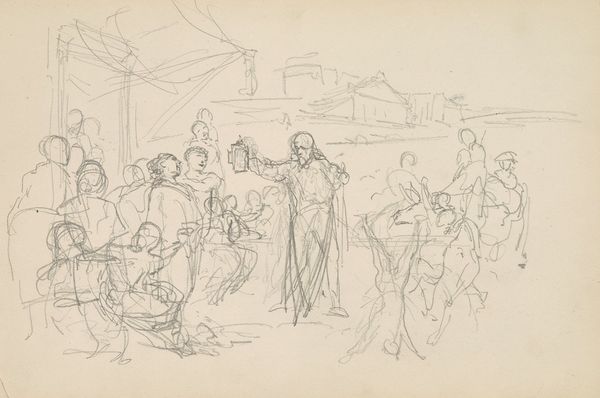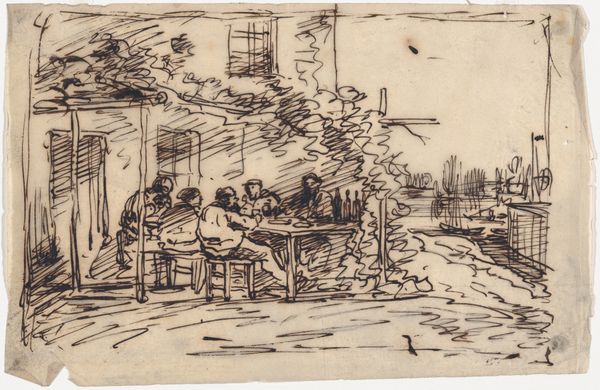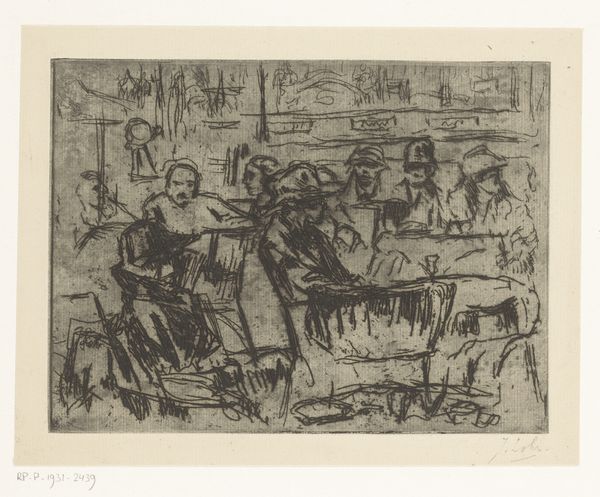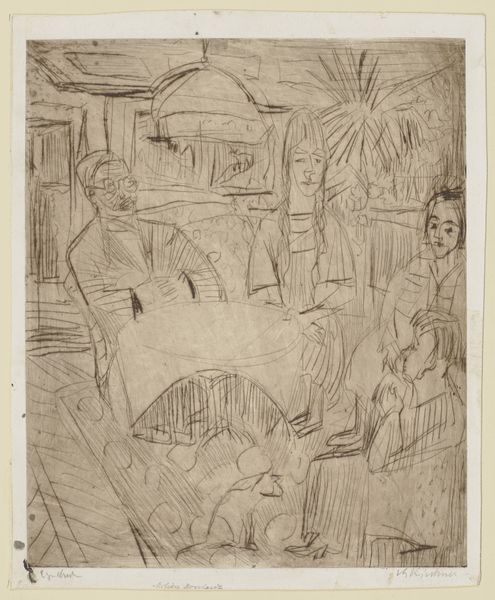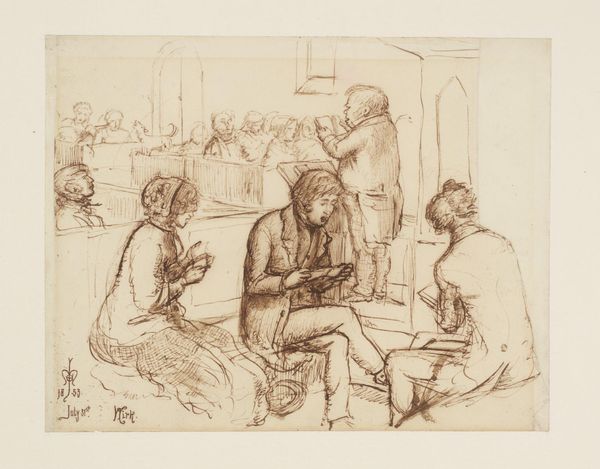
drawing, paper, pencil
#
drawing
#
narrative-art
#
landscape
#
paper
#
pencil
#
history-painting
#
realism
Copyright: Public Domain
Editor: This drawing, "Military army camp outside Reims," created by Jakob Nussbaum in 1916, uses pencil on paper. It's… raw. The quick, sketchy lines give a sense of immediacy, a feeling of being right there in that camp. What's your take? Curator: I’m immediately drawn to the stark reality it presents. Forget heroic depictions of war, this work delivers an intimate scene from a very materialist point of view. Consider the repetitive, almost mechanical mark-making. Nussbaum isn’t necessarily glorifying the subjects. How does the medium contribute to this understanding, you think? Editor: Good point. Pencil on paper allows for a fast, almost journalistic rendering. There's no time for refinement, only recording. Maybe that immediacy reflects the grueling labor these soldiers experienced? Curator: Precisely. Note how the artist emphasizes the weariness, focusing on the physical experience of being in that military encampment. What if this drawing isn't just *about* war but *produced* by war? Editor: That's an interesting way to frame it. Like, the limitations and demands of the war shaped the art itself. It speaks to a world where materials were scarce, where quick sketches were preferable to polished paintings. Curator: Yes. It becomes evidence of the specific material conditions of its making and its historical moment. Editor: I've never thought of considering the labor and constraints on the artist in a time of war. Looking at art from this perspective makes history much more vivid. Curator: It is by engaging with the means of artistic production and materials that we challenge the traditional narratives of high art, broadening our understanding of art as a form of human labor and testimony.
Comments
No comments
Be the first to comment and join the conversation on the ultimate creative platform.
